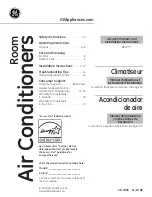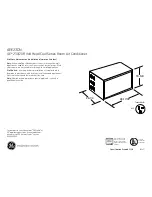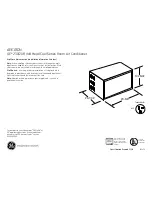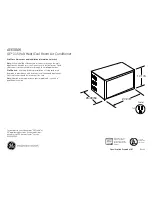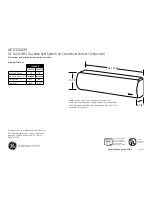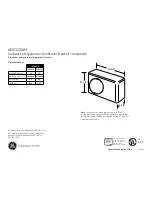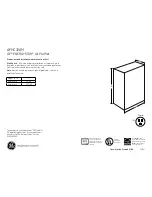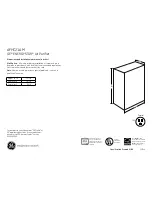
IM 934-2 Applied PDAA/PDHA / Page 13 of 44
Anchoring The Wall Sleeve
Anchoring the wall sleeve in the opening is
accomplished as shown in figure 15.
CAUTION
DO NOT drill holes in the bottom of the wall sleeve as it
will cause leaks.
It is recommended that rubber isolation washers be
used with the fasteners to minimize sound transmission
from the equipment to the wall at the point of contact.
Installation of Basic Wall Sleeve
Figure 15. Anchoring the Wall Sleeve (all anchoring
hardware field supplied)
Expansion
Anchor Bolt
Molly or
Toggle Bolt
Wood
Screw
Do Not Drill Holes in Bottom of
Sleeve
(Except for Internal Drain Kit)
Cripple Stud
Main Stud
Attaching Wall Sleeve to Subbase
1. Where a subbase is used, secure wall sleeve to
subbase with clips provided.
2. Caulk the wall sleeve to the wall opening on both
the inside and outside perimeter. Be careful not
to plug the weep holes. Caulking should be
resilient, nonhardening type such as silicone.
3. Secure the two sections by installing the clip
screws supplied with the hardware bag.
4. Caulk indoor/outdoor perimeter of wall sleeve
with resilient caulk such as silicone.
5. Finish any uncompleted electrical and/or plumbing
connections.
Frame and Brick Wall Construction Type
A heavy-gauge, corrosion resistant wall sleeve
is provided for each unit. The wall sleeve is either
shipped in a separate carton or shipped in a multipack
of 15.
The basic wall sleeve is designed to be easily
installed in a variety of wall constructions.
Note:
The
center of gravity is 10" (254mm) from the rear face of
the wall sleeve. The wall sleeve must be inserted into
the wall at least 10" (254mm) or other support must
be employed. Support can be from a factory supplied
subbase or from other field supplied materials.
Recommended installation procedures are described
below (see Figures 16, 17, & 18).
1. Clean the opening of all debris that may interfere
with installation.
2. If the unit is to be supplied with a subbase, install
subbase before installing wall sleeve (see IM 936).
3. lf the optional drain kit is to be employed (heat
pump only), see IM 942.
4. Place a thin pad of soft mortar on the bottom of
the opening and slide in the wall sleeve.
Be sure to recess the wall sleeve enough to
accommodate outside louver. This recess is 3/8"
(9.5mm) for stamped louvers and 1
1
/
4
"
(32mm) for
architectural louvers. Louver should be flush to
exterior surface when complete.
Note: The wall sleeve is not intended to replace
the lintel.
5. Level wall sleeve left to right and pitch
1/4" front to back, pitch to the outside. Secure by
anchoring with appropriate fasteners.
A 5/16" (8mm) hole is provided on each side, 2"
(51 mm) down from the top and 2" (51mm) in
from the rear of the wall sleeve. Additional holes
may be required to firmly secure the wall sleeve.
Refer to Anchoring The Wall Sleeve instructions
and figure 15.
CAUTION
DO NOT drill holes in the bottom of the wall sleeve as it
will cause leaks.
6. Where a subbase is used, secure wall sleeve to
subbase with clips provided.
7. Caulk the wall sleeve to the wall opening on both
the inside and outside perimeter. Be careful not
to plug the weep holes. Caulking should be
resilient, nonhardening type such as silicone.
Rubber
Isolation
Washer
































